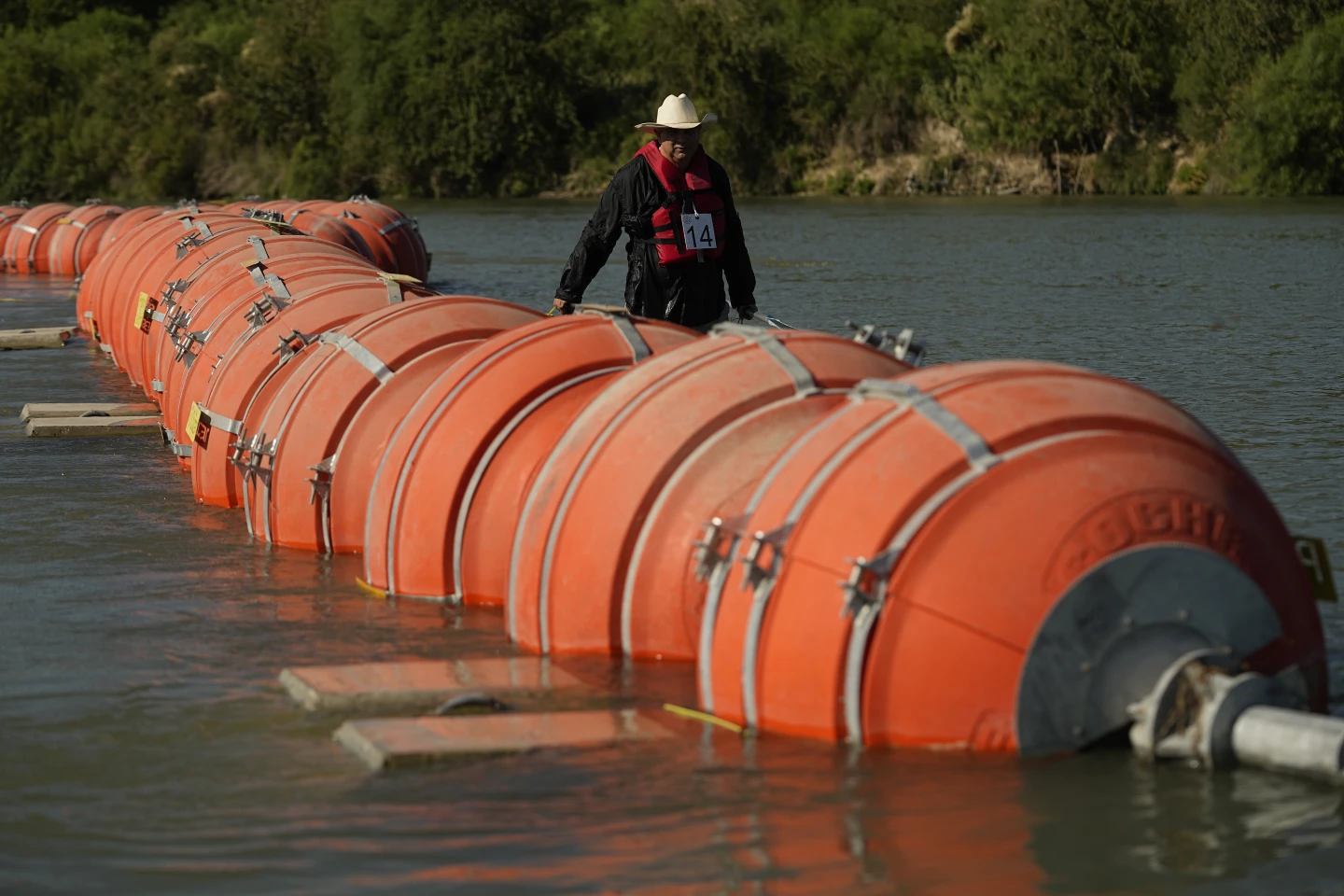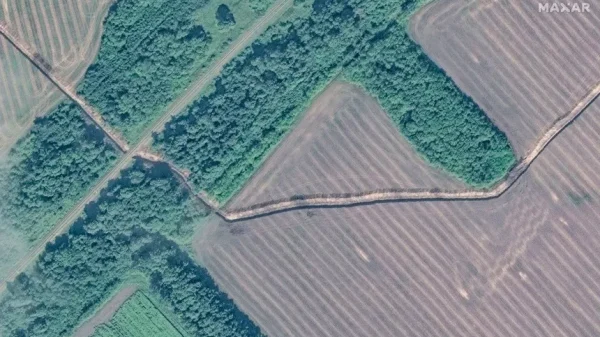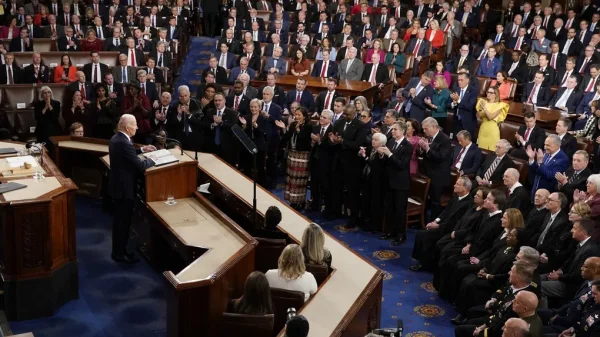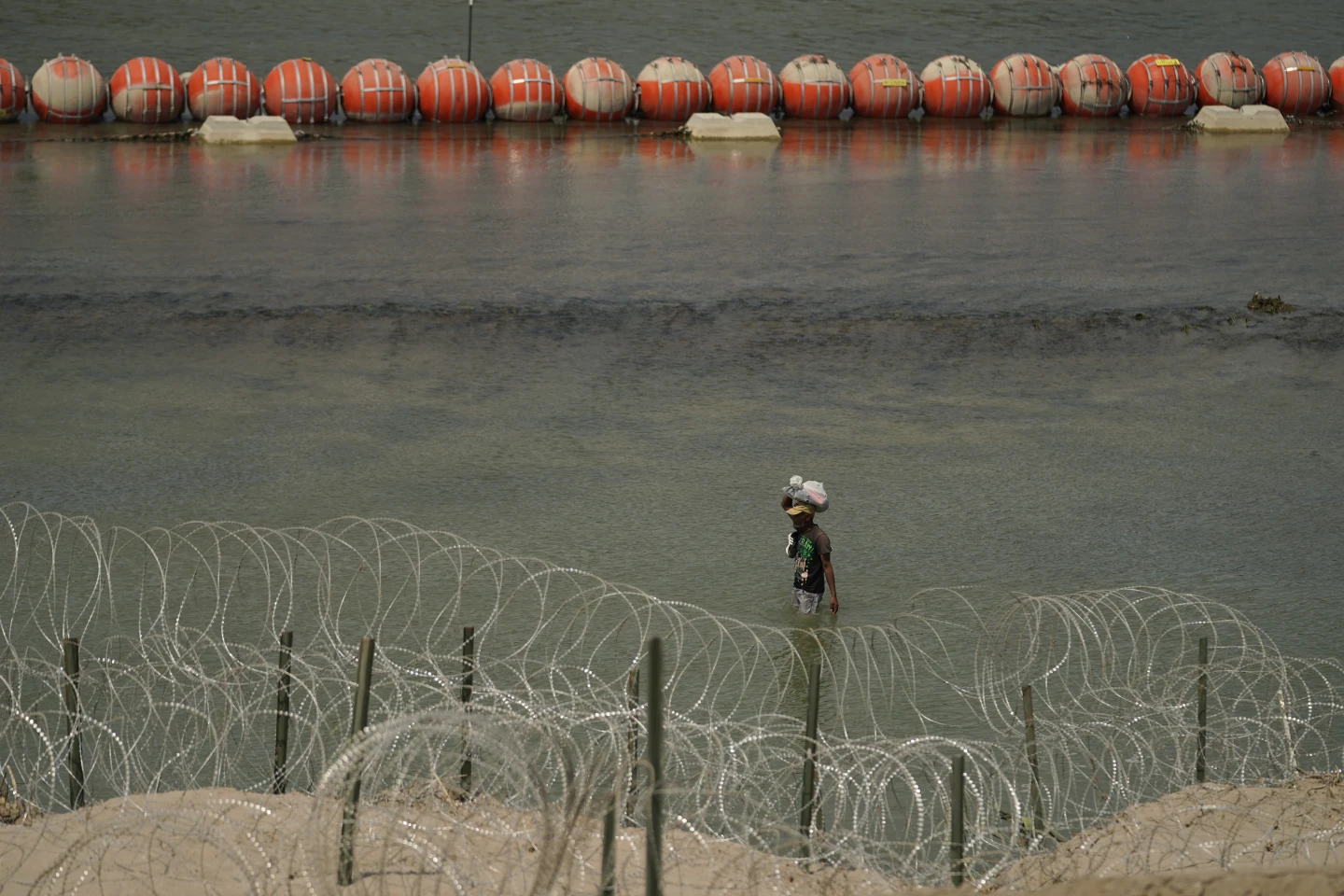The future of large buoys placed in the Rio Grande by Texas Governor Greg Abbott last year to discourage migrant crossings may hinge on whether a rocky, shallow part of the river can be considered “navigable,” and whether immigration can sometimes be seen as an aggressive invasion.
A full panel of judges from the 5th U.S. Circuit Court of Appeals heard arguments on these issues in New Orleans on Wednesday. This is part of ongoing legal battles over border control between Democratic President Joe Biden and the Republican governor. The judges did not give a timeline for their decision.
During the hearing, Texas argued that placing the barrier was justified under the state’s constitutional right to defend against invasion.
Judge Edith Jones questioned Justice Department attorney Michael Gray about whether federal law supersedes a state’s constitutional rights. She later asked under what circumstances the federal government can block a state’s self-defense efforts.
Gray responded to Jones and Judge James Ho by arguing that a governor cannot ignore federal law by simply claiming an invasion.

A kayaker walks past buoys (Via Steve Jacks/Shutterstock)
He stated, “Their argument is that once they declare an invasion, they can do whatever they want for as long as they want. We don’t agree with that.”
However, much of the discussion centered on whether the Biden administration was correct in categorizing the Rio Grande as subject to federal regulation as a navigable waterway.
Texas described this stretch of the river as rocky and shallow, even likening it to being “ankle deep” in one legal filing.
Lanora Pettit from the Texas Attorney General’s Office remarked, “For much of its history, the Rio Grande has been more like a creek with a strong public image.”
The Biden administration countered by pointing out past ferry usage in the area, the presence of vessels from the U.S. Coast Guard and the International Boundary and Water Commission, and potential future projects to improve the stretch for commercial traffic.


























